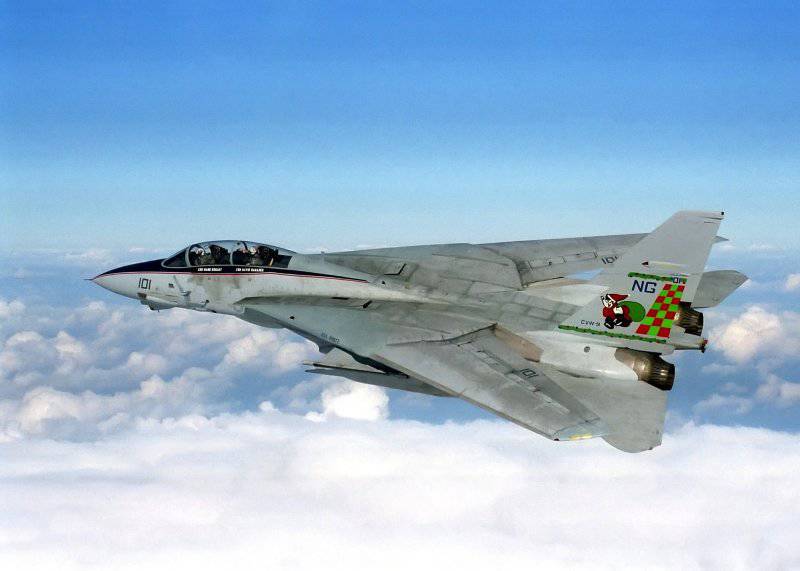The F-14 Tomcat is a legendary twin-engine, variable-sweep wing, supersonic fighter aircraft that has become synonymous with naval aviation. Developed by Grumman Aerospace Corporation (now part of Northrop Grumman) for the United States Navy (USN), the F-14 Tomcat has captivated the imagination of aviation enthusiasts and the public alike since its inception in the early 1970s. In this comprehensive article, we will delve into the fascinating history of the F-14 Tomcat, exploring its development, operational history, and the unique features that made it an iconic aircraft of the 20th century.

Development and Design
The origins of the F-14 Tomcat can be traced back to the USN's need for a new fleet defense interceptor in the 1960s. Grumman Aerospace Corporation, which had a long-standing relationship with the USN, was awarded the contract to develop the new aircraft in 1969. The project was led by a team of engineers that included Robert N. McGrath, William C. Miller, and Michael C. Collins.
The F-14 Tomcat's most distinctive feature is its variable-sweep wings, which can be adjusted between 20 and 68 degrees of sweep, depending on the flight conditions. This unique design allowed the aircraft to maintain optimal aerodynamic performance during various flight regimes, including low-speed takeoffs and landings, as well as high-speed interceptions.
Powered by two Pratt & Whitney TF30 turbofan engines, the F-14 Tomcat could reach a top speed of Mach 2.34 and had a combat radius of around 500 nautical miles. The aircraft was equipped with state-of-the-art avionics systems, such as the AN/AWG-9 radar and the Central Air Data Computer (CADC), which allowed it to track and engage multiple targets simultaneously.

Operational History
The F-14 Tomcat entered service with the USN in September 1974 and quickly gained a reputation as a formidable air superiority fighter. Its primary mission was to defend the carrier battle group from potential threats, including enemy aircraft and cruise missiles. The F-14 Tomcat was also capable of carrying out air-to-ground strike missions, reconnaissance, and tactical air control.
One of the most notable aspects of the F-14 Tomcat's operational history is its involvement in the 1981 Gulf of Sidra incident. During this tense encounter, two F-14s from the USS Nimitz engaged and shot down two Libyan Su-22 Fitters in a clear demonstration of the aircraft's air-to-air combat capabilities.
The F-14 Tomcat also played a significant role in the Gulf War, where it was used for air superiority, strike missions, and reconnaissance. Its exceptional range and advanced radar system made it a valuable asset for the USN during the conflict.
In addition to serving in the USN, the F-14 Tomcat was also operated by the Islamic Republic of Iran Air Force (IRIAF), which acquired the aircraft in the 1970s before the Iranian Revolution. The IRIAF continues to operate the F-14 Tomcat to this day, despite facing challenges in maintaining and upgrading the aging fleet.

Variants and Upgrades
Throughout its service life, the F-14 Tomcat underwent several upgrades and modifications to enhance its capabilities. Some of the most notable variants include the F-14A, which was the initial production model, the F-14A+ (later redesignated as the F-14B), which featured improved engines, and the F-14D, which incorporated a host of avionics and weapon system upgrades.
One significant upgrade was the F-14 Tomcat's transition to a multi-role fighter with the introduction of the Tactical Airborne Reconnaissance Pod System (TARPS) and the ability to carry air-to-ground ordnance. This made the F-14 a versatile platform capable of performing a wide range of missions, including air-to-air, air-to-ground, and reconnaissance.
Another important upgrade was the incorporation of the Low-Altitude Navigation and Targeting Infrared for Night (LANTIRN) system, which allowed the F-14 Tomcat to conduct precision ground-attack missions at night and in adverse weather conditions. The integration of the AIM-54 Phoenix long-range air-to-air missile also significantly improved the F-14's ability to engage enemy aircraft at extended ranges.

Retirement and Legacy
As the 21st century dawned, the F-14 Tomcat began to show its age, and the USN started the process of replacing it with the newer and more advanced F/A-18E/F Super Hornet. The final F-14 Tomcat sortie took place on February 8, 2006, marking the end of an era for this legendary aircraft.
Despite its retirement, the F-14 Tomcat remains a symbol of American airpower and an iconic aircraft in the history of aviation. Its unique design, impressive performance, and storied operational history have left a lasting impact on military aviation and inspired subsequent generations of fighter aircraft.
'비행기' 카테고리의 다른 글
| Eurocanard "Typoon" (0) | 2023.03.15 |
|---|---|
| Rhino "F-4 Phatom 2" (0) | 2023.03.15 |
| Forktail Devil "Lockheed P-38 Lightning" (0) | 2023.03.13 |
| Baekho "MIG 15" (0) | 2023.03.13 |
| Sound breaker "Bell X-1" (0) | 2023.03.13 |



